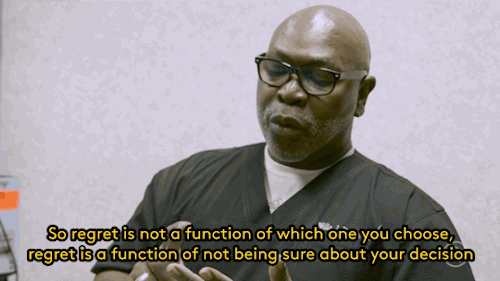Er-zico - Leisure

More Posts from Er-zico and Others

5 Ways to Challenge Mental Health Stigma
By Palmer Hipp–May is Mental Health Month, and even though school is winding down, it’s the perfect time to learn about mental health and ways to fight stigma.
If you are experiencing or have a history of mental illness, what are comments you’ve received from your family or friends?
“Why can’t you just be happy?”
“She’s just looking for attention.”
If you are experiencing or have a history of mental illness, what are comments you’ve told yourself?
“Why try? I’m not good enough.”
“No one will love me looking like this.”
These are just a few examples that came to mind. Individuals experience negative stereotypes because others perceive them as “different.” Stigma is the process of distinguishing and labeling group differences, stereotyping and separating “us” vs. “them,” as well as status loss and discrimination.
In America, 1 in 5 adults will have a mental illness during their lifetime. Nearly 60% of adults with mental illnesses do not receive treatment in a given year. Stigma generates shame, hopelessness, exclusion, lack of social support and low self-esteem. Those impacted by stigma are less likely to seek help and accept help if offered.
So how do we fight stigma? I have been a member as well as president of the Active Minds chapter on my university’s campus, and if anyone is familiar with the organization, you’ll easily recognize the phrase “Stigma Fighter.” It’s a name I proudly call myself, and it adequately describes the battle needed to challenge mental health stigma. I encourage you to become an advocate and fight the stigma surrounding mental health.
Here are five ways to challenge mental health stigma:
1. Learn the facts
Educate yourself about mental health and mental illness. If you learn the facts, you can teach others.
2. Speak up
Assist your friends or family members any time they display false beliefs or say stigmatizing and hurtful comments. Use this as a chance to educate and challenge. Many times people are misinformed and do not know that what they believe to be true is really just stereotypes and misconceptions. Test any false and stigmatizing comments and images portrayed in the media.
3. Language matters
Become aware of the language you use. Generic labels like “crazy” can be disrespectful and further increase stigma. Put people first, not their conditions. For example say, “person with anorexia” rather than “anorexic." [Ed note: while this is a good practice for eating disorders, please keep in mind that some people with other disorders (e.g., autism) may prefer identity-first language. When in doubt, ask (respectfully)!]
4. Show empathy
Show respect, compassion and love toward others. Don’t label or judge. People are more than their diagnoses. Recognize that mental illnesses are treatable and very common—break the stigma with attitudes and behaviors.
5. Talk
Share your story if you experience or have a history of mental illness. The best way to help others realize they are not alone is to talk openly about your struggles and triumphs. Mental health should not be a secret. The more people talk openly, the more likely someone else will be to seek help and remove the perception surrounding mental health.

Collection of works by Aldous Huxley, enjoy!
Aldous Huxley - Ape and Essence
Aldous Huxley - Brave New World
Aldous Huxley - Crome Yellow
Aldous Huxley - Ends and Means
Aldous Huxley - Heaven And Hell
Aldous Huxley - Island
Aldous Huxley - Jacob’s Hands
Aldous Huxley - The Art Of Seeing
Aldous Huxley - The Doors Of Perception
Aldous Huxley - The Perennial Philosophy
Aldous Huxley -Culture and the Individual
Aldous Huxley - Drugs And Creativity
Aldous Huxley - Now More than Ever (2000)
Aldous Huxley - Time Must Have a Stop (1944)





This is what a real, qualified OBGYN will tell you about what women feel when they get an abortion
Dr. Willie Parker, who is trained as a gynecologist and OBGYN, is a hero for the pro-choice movement because he’s honest about the undiscussed aspects of getting (or not getting) an abortion. Watch how he gives a consultation.




21 Queer Indians Recall The Exact Moment They Came Out To Their Parents
For members from the LGBTQ community, coming out can prove a challenging experience. It can prove even more testing in India, a country that still outlaws same gender sex.









Some of the heaviest elements ever seen have been given tentative names by their discoverers. The namesakes? Three places and a Russian dude.
These names aren’t settled on quite yet - there is a five month probation period during which the International Union of Pure and Applied Chemistry (IUPAC) welcomes public comment. You can email the IUPAC president directly with your thoughts.
If you discovered an element, what would you name it?
Defining "rape culture"
A rape culture is a complex of beliefs that encourages male sexual aggression and supports violence against women.
It is a society where violence is seen as sexy and sexuality as violent. In a rape culture, women perceive a continuum of threatened violence that ranges from sexual remarks to sexual touching to rape itself.
A rape culture condones physical and emotional terrorism against women as the norm.
~ Rape culture is encouraging male sexual aggression.
~ Rape culture is regarding violence as sexy and sexuality as violent.
~ Rape culture is treating rape as a compliment, as the unbridled passion stirred in a healthy man by a beautiful woman, making irresistible the urge to rip open her bodice or slam her against a wall, or a wrought-iron fence, or a car hood, or pull her by her hair, or shove her onto a bed, or any one of a million other images of fight-fucking in movies and television shows and on the covers of romance novels that convey violent urges are inextricably linked with (straight) sexuality.
~ Rape culture is encouraging men to use the language of rape to establish dominance over one another ("I'll make you my bitch").
~ Rape culture is making rape a ubiquitous part of male-exclusive bonding.

Mercury is officially “out” of retrograde! Know what that means? That the planet doesn’t appear to move backward in the sky due to our motion relative to the “backdrop” of space, because that’s what retrograde notion is – an optical illusion.
So, observers from our past who knew nothing of celestial mechanics and orbital motion (let alone that we are among billions of other solar systems in the universe) perceived Mercury’s odd “movement” as some kind of foreboding communication from the cosmic beyond which indicated a disturbance of reality, rather than consulting (and trusting) an actual astronomer on this “phenomena”.
Still blaming Mercury retrograde for your problems? Congratulations, you’ve managed to remain ignorant after nearly 500 years of scientific progress.
“Astrology is bunk, it’s fraud.” – Carl Sagan










Beautiful Modern Agate and Raw Crystal Jewellery By Gossamer and Violet
Gossamer and Violet, a jewellery store in Etsy selling one of a kind handmade vintage inspired agate jewellery uses unrefined precious stones and delicate silver-work to create unique accessories. Specializing in adjustable agate slice rings and bold statement jewellery including necklaces, bracelets and earrings, they have a wide range of pieces to cater to different tastes. The style of the jewellery is themed around modern lines and shapes with earthly colors, textures and materials.
Gossamer and Violet, named after being inspired by delicate gold filigree chain intertwined around the violet shade of unrefined earthly stones, sells hand-crafted jewellery that has exclusive designs made with hand-selected stones. The jewellery is based around the bright colored stone, raw and jagged shaped, with thin gold or silver highlighting the piece. The maker sources only the highest quality American materials and strenuously hand assembles each piece, making sure the product leaves the hands of the maker to the wearer at the highest standard. You can find their entire collection in her Etsy shop.
View similar posts here!

Today’s #dalithistory month post is on the Adi-movements of the 1920’s and 30s. For Dalit history, ‘Adi’ ideologies are highly significant as they bear testament to some of our earliest assertion of equal rights, humanity and citizenship on level with other castes.
By the late 19th century, leaders like the social reformer Jyotirao Phule, had created a powerful anti-caste space, upholding non-Brahmanical thought and presenting the dream of a new egalitarian value system on which to model society on. Soon after, the early 20th century saw several archeological discoveries being made in Mohenjodaro and Harappa in the North, pointing to the existence of an unexpectedly ancient civilization that was likely much older than Aryan migrations. These discoveries struck a profound chord with Dalits all over the subcontinent, who immediately began to identify as an indigenous population who were conquered and subsequently oppressed by an alien religion. Although, the evidence for Aryan conquests remains contested, these interpretation was so compelling that such “Adi” (Ancient/Old/Original) movements sprung up all over the nation completely independently of each other.
The names of these movements are telling - Ad-Dharm in Punjab, Adi-Hindu in U.P. and Hyderabad, Adi-Dravida, Adi-Andhra and Adi-Karnataka in South India - all indicating a common claim to nativity and original inhabitation.
The provocative effects of the Adi-movements are best illustrated by an early Maharashtrian pre-Ambedkar Dalit leader, Kisan Faguji Bansode, who warned his caste-Hindu friends in 1909, stating: “The Aryans - your ancestors - conquered us and gave us unbearable harassment. At that time we were your conquest, you treated us worse than slaves and subjected us to any torture you wanted. But now we are no longer your subjects, we have no service relationship with you, we are not your slaves or serfs… We have had enough of the harassment and torture of the Hindus.”
In Andhra, the process was accelerated by the commercialized coastal areas that produced both a mobile Dalit agricultural class and a small educated section that produced leaders Bhagyareddy Varma and Arigyay Ramswamy who managed to mobilize nearly a third of the Malas and Madigas of the Madras Presidency to state their identity in the official census of 1931 as Adi-Andhra.
In Tamil Nadu, some Dalits identified themselves as Adi-Dravidas while Telugu and Kannada counterparts also identified as Adi-Hindu or Adi-Karnataka. In the north, in Uttar Pradesh, an untouchable ascetic, who radically called himself Acchutananda, began to organize an Adi-Hindu identity, arguing, “The untouchables, are in fact Adi-Hindu, i.e. the original and autochthonous Nagas or Dasas of the north and the Dravidas of the south, the undisputed, heavenly owners of Bharat.”
In Punjab, Mangoo Ram Mugowalia, a Dalit who had left the Gaddar movement, unable to stand the Casteism within it, began the Ad-Dharmi movement. By 1926, he had influenced a huge number of Dalits to boldly register themselves a separate “quaum” (religious group) in Hoshiarpur despite the threat of imminent violence. By the 1931 census, nearly 500,000 Dalits registered themselves as Ad-Dharmis all over Punjab.
To counter a growing ‘Adi’ consensus, Brahmins began actively renaming Dalits, ‘Panchama’ (the Fifth). Gandhi used it in his Young India for a long time. Many Dalits of the day strongly pushed back against the term insisting the idea of ‘Panchama’ was derogatory and only served to attenuate the age-long hyper-oppressive framework of Hindu society and solidify their position outside the caste order.

Ask yourself: 1.Do I feel like I can say what I need to say in my relationship? 2. Do I listen to my partner about what’s bothering them? 3. Do I feel comfortable saying “no” and “stop” to my partner? Will they listen? 4. Can I talk with my partner about using condoms and birth control?
Click here for more great information about healthy relationships!
-
 er-zico reblogged this · 8 years ago
er-zico reblogged this · 8 years ago -
 rebeleden liked this · 8 years ago
rebeleden liked this · 8 years ago -
 companioncube76 reblogged this · 8 years ago
companioncube76 reblogged this · 8 years ago -
 er-zico liked this · 8 years ago
er-zico liked this · 8 years ago -
 antoinecrawford liked this · 8 years ago
antoinecrawford liked this · 8 years ago -
 herricaneamber reblogged this · 8 years ago
herricaneamber reblogged this · 8 years ago -
 engineering-girls reblogged this · 8 years ago
engineering-girls reblogged this · 8 years ago -
 skcirthinq reblogged this · 8 years ago
skcirthinq reblogged this · 8 years ago -
 darkcountercurrent liked this · 8 years ago
darkcountercurrent liked this · 8 years ago -
 seekbliss liked this · 8 years ago
seekbliss liked this · 8 years ago -
 opakakaek reblogged this · 8 years ago
opakakaek reblogged this · 8 years ago -
 ambroseharte liked this · 8 years ago
ambroseharte liked this · 8 years ago -
 mylittlecorneroftheuniverse liked this · 8 years ago
mylittlecorneroftheuniverse liked this · 8 years ago -
 urmumiskewl liked this · 8 years ago
urmumiskewl liked this · 8 years ago -
 jacksoncurtisbehre reblogged this · 8 years ago
jacksoncurtisbehre reblogged this · 8 years ago -
 theworldismyoysterandiamthepearl liked this · 8 years ago
theworldismyoysterandiamthepearl liked this · 8 years ago -
 kimu16 liked this · 8 years ago
kimu16 liked this · 8 years ago -
 watermellens liked this · 8 years ago
watermellens liked this · 8 years ago -
 28moreno-blog liked this · 8 years ago
28moreno-blog liked this · 8 years ago -
 1990-beyond reblogged this · 8 years ago
1990-beyond reblogged this · 8 years ago -
 blackcatgodess liked this · 8 years ago
blackcatgodess liked this · 8 years ago -
 alycinwonder liked this · 8 years ago
alycinwonder liked this · 8 years ago -
 paigeoforacle reblogged this · 8 years ago
paigeoforacle reblogged this · 8 years ago -
 jamesadamtaylor liked this · 8 years ago
jamesadamtaylor liked this · 8 years ago -
 jamesadamtaylor reblogged this · 8 years ago
jamesadamtaylor reblogged this · 8 years ago -
 nominis-expers liked this · 8 years ago
nominis-expers liked this · 8 years ago -
 gogwyllgi reblogged this · 8 years ago
gogwyllgi reblogged this · 8 years ago -
 bestfoodpictures liked this · 8 years ago
bestfoodpictures liked this · 8 years ago -
 finalay reblogged this · 8 years ago
finalay reblogged this · 8 years ago -
 cthulhujizz reblogged this · 8 years ago
cthulhujizz reblogged this · 8 years ago -
 what-is-done-cannot-be-undone liked this · 8 years ago
what-is-done-cannot-be-undone liked this · 8 years ago -
 mechgasm liked this · 8 years ago
mechgasm liked this · 8 years ago -
 heartofstarlight liked this · 8 years ago
heartofstarlight liked this · 8 years ago -
 maycemcnulty liked this · 8 years ago
maycemcnulty liked this · 8 years ago -
 rypiecandoit reblogged this · 8 years ago
rypiecandoit reblogged this · 8 years ago -
 ice4smaster liked this · 8 years ago
ice4smaster liked this · 8 years ago -
 letsgowild liked this · 8 years ago
letsgowild liked this · 8 years ago -
 madame-melancholy liked this · 8 years ago
madame-melancholy liked this · 8 years ago -
 brentms80 reblogged this · 8 years ago
brentms80 reblogged this · 8 years ago -
 brentms80 liked this · 8 years ago
brentms80 liked this · 8 years ago
Dear Readers,Welcome to my personal blog. I'm Sabyasachi Naik (Zico,24).An Agnostic,deeply NON religious(atheist), and Secular Progressive Civil Engineer . I'm brown and proud to be an Indian tribe. “I want to say a word to the Brahmins: In the name of God, religion, sastras you have duped us. We were the ruling people. Stop this life of cheating us from this year. Give room for rationalism and humanism.” ― Periyar E.V. Ramasamy
198 posts